If you’re in the market for a new home, or maybe you just enjoy perusing real estate apps on your smartphone, you’ve probably noticed that a three-bedroom, two-bathroom house with a nice backyard is worth a lot more these days. Even just a year ago, that same home could’ve sold for tens of thousands of dollars less.
“The dollars jumped from an average sale price of $337,000 in 2020 (in Grand Traverse County). You go to 2021—apples to apples—that same price from $337,000 is now $402,000,” said Matt Hodges, co-owner of Luxury Real Estate Boutique Kultura Group and president of Aspire North Realtors, a local arm of the Michigan Realtors Association. “That was probably the biggest indicator of how the market, especially those rural areas, are being squeezed as the dollars are going up pretty significantly.”
Hodges says there are a couple of key factors that led us here. “We haven’t seen this type of market, maybe ever, in our lifetime. In 2020, every industry shut down. So you look at the trades industry. Nobody was working for several months, so essentially construction stopped. You can even take that back as far as 2008 and 2009 when the entire industry, the entire economy crashed, and building wasn’t happening. So we were already in a pinch, probably eight to 10 years behind on new construction. Then, of course, the pandemic hit where everything just stopped,” he said. In addition to falling behind on construction, supply chain issues and the rising cost of materials are only adding to high prices.
As the housing supply struggles to catch up, demand is only growing. We know better than most that northern Michigan is an incredible place to live. With increasing opportunities to work remotely, and easier access to the Grand Traverse region with more direct flights in and out of Traverse City—we’re also seeing more people set their sights on settling in our region. More interested buyers mean more competition for the same, low inventory. That’s keeping the cost of homeownership high. As prices hold high, more are looking to rural areas close to all the conveniences of a city, with slightly softened sticker shock.
Hodges says the number of homes sold has held steady the past couple of years. In 2020, roughly 1,700 homes were sold in Grand Traverse County. The same was true for 2021. Excluding homes owned by landlords in those same years, Cherryland recorded around 1,000 account transfers each year, which in most cases signifies the sale and purchase of an individual home. That’s more than half of the real estate sold in the county located on cooperative lines, in historically more rural areas.
So what does that mean for you and your co-op? Growth is good news. Unique from other utilities, 95% of Cherryland’s members are residential. When our residential membership grows through newly constructed homes or as seasonal cottages are converted to year-round homes, it helps us keep prices low by spreading the cost of electricity across more members. At the same time—Cherryland is proactively considering the infrastructure needed to facilitate the growth by carefully curating the supplies we need to be prepared as this growth trend continues.
As for the future of our real estate market, Hodges says, “The buyers are here, the inventory is short, and we don’t see that going away. I think it’s going to continue to be a seller’s market. That’s probably the biggest thing.”
Whether you’re window shopping on Zillow or on a serious hunt for your next home—Hodges says even the National Association of Realtors doesn’t see this fast-paced, high-priced market slowing down. A serious buyer should be prepared to understand what their money can buy in this new market. Homes aren’t lasting long before they’re spoken for, so buyers should be ready to make moves. Finally, keep an open mind. Your perfect home may be more affordable if you consider the benefits of rural real estate.



Leave A Comment